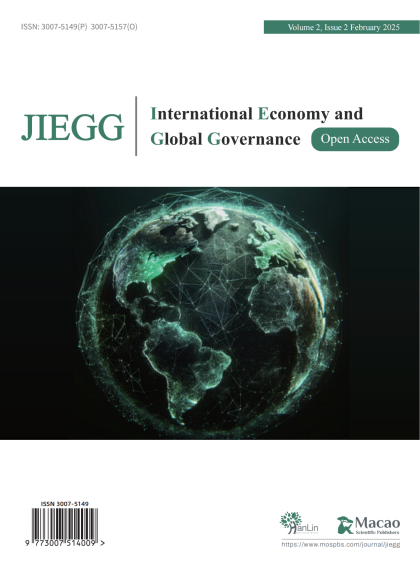-
Bhardwaj, P. (2022). Critical appraisal of the Singapore Convention on mediation. Jus Corpus Law Journal, 3(2), 967-975.
-
Cai, W. (2022). Diversity of mediation and its impact on the Singapore Mediation Convention. Hong Kong Law Journal, 52(1), 235-256.
-
Chen, Meng. (2023). Commercial mediation in mainland china: pitfalls & opportunities. Pepperdine Dispute Resolution Law Journal, 23(2), 167-201.
-
China International Economic and Trade Arbitration Commission. (2010). The New York Convention and judicial practice of international commercial arbitration [Conference proceedings]. Beijing: Law Press.
-
Dong, C. (2020). Regulating "evasion": The technical choices, institutional evolution, and improvement strategies of China's civil and commercial law. Northern Legal Science, 14(3), 14-25.
-
Duric, Duro, Jovanovic, Vladimir, & Skoric, Sanja. (2024). Mediation settlement agreement under the singapore convention as cross-border restructuring instrument. LAW Theory and Practice, 41(3), 1-16.
-
Dong, L. (2018). Practical report on the Chinese translation of "Achieving Reasonableness: An Empirical Assessment of International Commercial Mediation" [Master's thesis, Shandong University of Science and Technology].
-
Hioureas, C. G. (2019). The Singapore Convention on International Settlement Agreements resulting from mediation: A new way forward? Ecology Law Quarterly, 46(1), 61-70.
-
Jiang, H. (2022). Reflection and innovation of the recognition and enforcement mechanism of China-ASEAN commercial arbitration under the RCEP background. Political and Legal Forum, 2022(6), 97-109.
-
Li, C., & Chen, L. (2014). Prevention and regulation of malicious mediation—Based on the analysis of its causes. Theory and Reform, 2014(1), 158-161.
-
Lian, J. (2022). The construction of China's enforcement mechanism for international commercial settlement agreements under the Singapore Mediation Convention. Yangtze Forum, 2022(3), 69-78.
-
Malacka, M. (2022). The Singapore Mediation Convention and international business mediation. International and Comparative Law Review, 22(2), 179-196.
-
Malacka, M. (2022). The relations between the Singapore Mediation Convention and the European Mediation Directive. European Studies, 9(2).
-
Saumya, Ayushi. (2020). Singapore Convention on Mediation: Historic Evolution of the Mediation Landscape. International Journal of Law Management & Humanities, 3, 938-947.
-
Shah, C., & D'cunha, A. A. (2020). Singapore Mediation Convention: Transforming the future of alternative dispute resolution. Jurisprudence, 1(1).
-
Sheng, Z. (2023). The Singapore Convention on Mediation and China's commercial mediation: Toward a full-fledged regime. China Legal Science, 11(1), 82-109.
-
Sun, N. (2021). The ratification and implementation of the Singapore Mediation Convention in China. Legal Studies, 43(2), 156-173.
-
Tan, D. (2023). The Singapore Convention on Mediation to reinforce the status of international mediated settlement agreement: Breakthrough or redundancy? Conflict Resolution Quarterly, 40(4), 467-482.
-
Tan, Yumeng. (2022). An Analysis of Mediators' Misconducts Relating to Articles 5(1)(E) and 5(1)(F) of the Singapore Convention on Mediation. Bristol Law Review, 2022, 115-142.
-
Wang, F. (2022). A decade of China's commercial mediation: Keeping up with the times, striving forward, and exploring innovation. China Foreign Trade, 2022(10), 26-29.
-
Wen, X. (2019). The Singapore Convention and China's commercial mediation—A comparison with the New York Convention and the Hague Choice of Court Convention. China Law Review, 2019(1), 198-208.
-
Xiong, H. (2022). The Singapore Mediation Convention and China's commercial mediation legislation from a contextualist perspective: Centering on mediation models. The Jurist, 2022(6), 17-30, 191.
-
Yan, H., & Chen, Q. (2022). Defining and addressing fraudulent mediation under the Singapore Mediation Convention: Challenges and China's response. Journal of Shanghai University of Political Science and Law (Rule of Law Forum), 37(3), 93-105.
-
Yu, J., & Wu, Z. (2014). International Economic Law. Beijing: Peking University Press.
-
Zhang, L. (2020). Judicial issues and legislative improvements regarding the recognition and enforcement of foreign judgments in China. Shandong Social Sciences, 2020(8), 135-139.
-
Sheng, Zhang. (2023). The singapore convention on mediation and china's commercial mediation: toward full-fledged regime. China Legal Science, 11(1), 82-109.
-
Zhang, X. (2022). An empirical study on the application of the due process clause of the New York Convention by mainland Chinese courts. Commercial Arbitration and Mediation, 2022(4), 53-63.
-
Zhao, Y. (2020). The Singapore Mediation Convention: The future development of international commercial mediation under the new "New York Convention". Local Legislation Research, 5(3), 76-86.
-
Zuo, W. (2022). An empirical study on China's response to "difficulty in enforcement"—Based on regional experiences. Peking University Law Journal, 34(6), 1445-1463.

